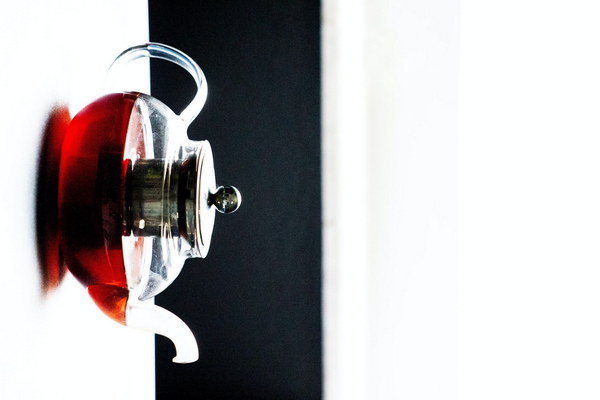Balancing Phlegm-Dampness and Strengthening Qi and Blood A Holistic Approach to Traditional Chinese Medicine
In Traditional Chinese Medicine (TCM), the concept of balancing the body's Yin and Yang is crucial for maintaining health and preventing disease. One common imbalance that TCM practitioners often encounter is the presence of phlegm-dampness, which can lead to various health issues. This article will explore the concept of phlegm-dampness and discuss how TCM can help to balance it by focusing on strengthening Qi and Blood.
What is Phlegm-Dampness?
Phlegm-dampness is a TCM term that refers to a condition where an excess of dampness and phlegm accumulates in the body. This imbalance can be caused by factors such as poor diet, excessive consumption of cold and damp foods, or lack of exercise. When phlegm-dampness is present, it can manifest in various ways, including:
- Fatigue and weakness
- Weight gain or obesity
- Edema (swelling) in the legs and feet
- Digestive issues, such as bloating, constipation, or diarrhea
- Headaches and dizziness
- Sinus congestion and runny nose

How TCM Balances Phlegm-Dampness
TCM views the body as an interconnected system, and treating an imbalance in one aspect can have a ripple effect on other areas. To balance phlegm-dampness, TCM practitioners may employ various techniques, including:
1. Diet and lifestyle changes: By eliminating cold, damp, and heavy foods from the diet, such as ice cream, raw vegetables, and heavy meats, and incorporating warm, dry, and light foods, such as soups, lean proteins, and vegetables, the body can begin to eliminate excess dampness and phlegm.
2. Acupuncture: Acupuncture is a therapeutic technique that involves inserting fine needles into specific points on the body. These points correspond to meridians, which are pathways through which Qi flows. By stimulating these points, acupuncture can help to balance the body's energy and eliminate phlegm-dampness.
3. Herbs: TCM utilizes a wide variety of herbs to treat various conditions. Herbs that are commonly used to address phlegm-dampness include:
- Atractylodes macrocephala: Also known as Cang Zhu, this herb is used to drain dampness and transform phlegm.
- Pinellia ternata: Known as Ban Xia, this herb is often used in combination with other herbs to dry dampness and resolve phlegm.
- Forsythia suspense: Also called Lian Qiao, this herb is believed to clear heat and resolve phlegm, making it useful for treating respiratory conditions.
4. Tai Chi and Qigong: These ancient practices involve slow, deliberate movements and breathing exercises designed to cultivate and balance Qi. By practicing Tai Chi and Qigong, individuals can improve their overall health and help to eliminate phlegm-dampness.
5. Cupping: Cupping is a technique that involves placing cups on the skin to create suction. This can help to improve blood circulation, reduce muscle tension, and eliminate dampness and phlegm.
Strengthening Qi and Blood
While balancing phlegm-dampness is essential, TCM also emphasizes the importance of strengthening Qi and Blood. Qi is the vital life force that animates the body, and Blood is the substance that nourishes it. When Qi and Blood are strong, the body is better equipped to fight off disease and maintain health.
To strengthen Qi and Blood, TCM practitioners may recommend the following:
- Regular exercise, such as walking, jogging, or tai chi
- Proper nutrition, including a balanced diet rich in fruits, vegetables, lean proteins, and whole grains
- Adequate rest and sleep
- Stress reduction techniques, such as meditation, deep breathing exercises, or spending time in nature
Conclusion
Balancing phlegm-dampness and strengthening Qi and Blood are key components of TCM's approach to health and wellness. By addressing these imbalances, individuals can improve their overall well-being and reduce the risk of various health issues. If you suspect you have phlegm-dampness or other imbalances, consider consulting with a TCM practitioner to learn more about how you can achieve balance and improve your health.









